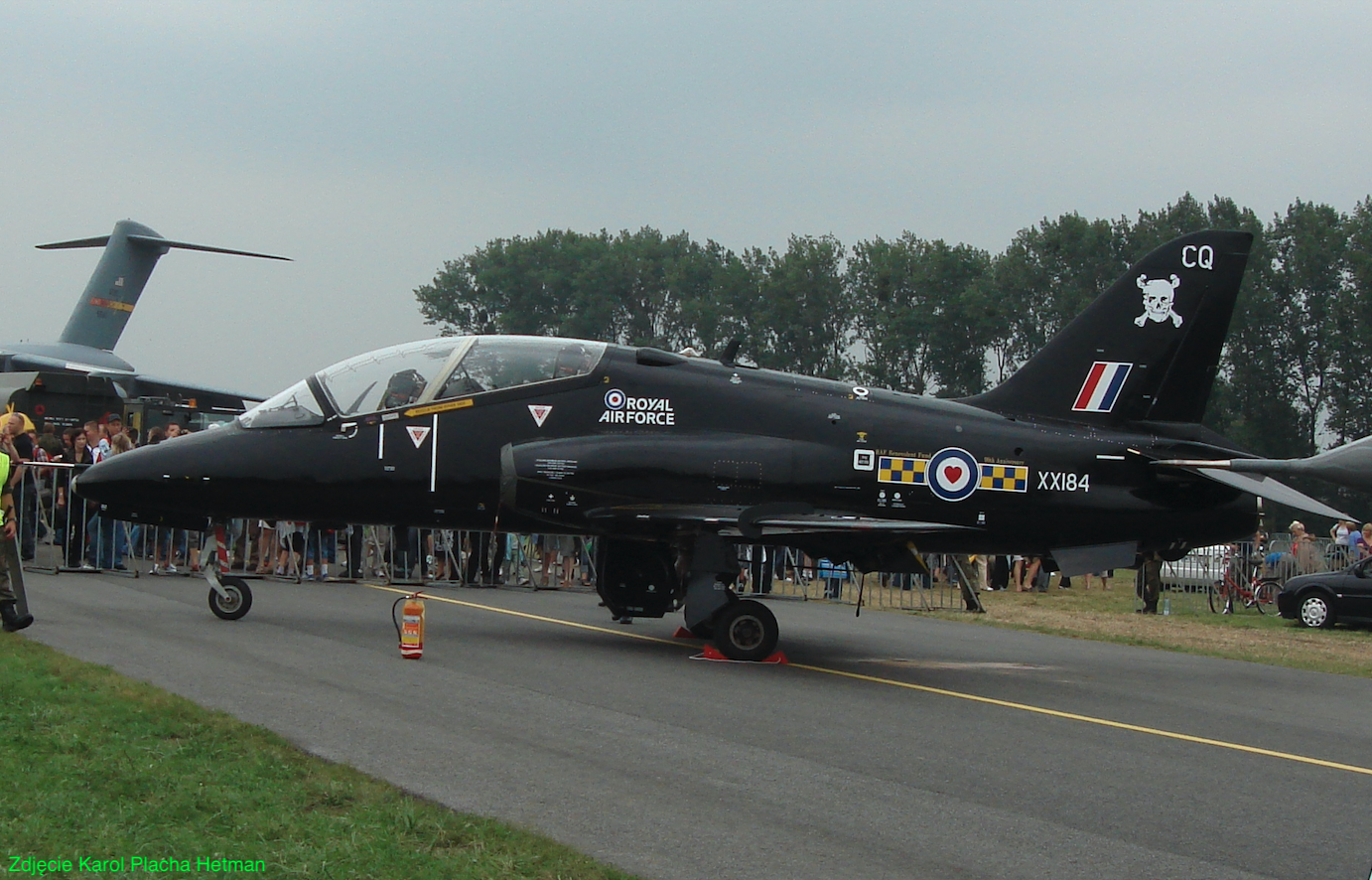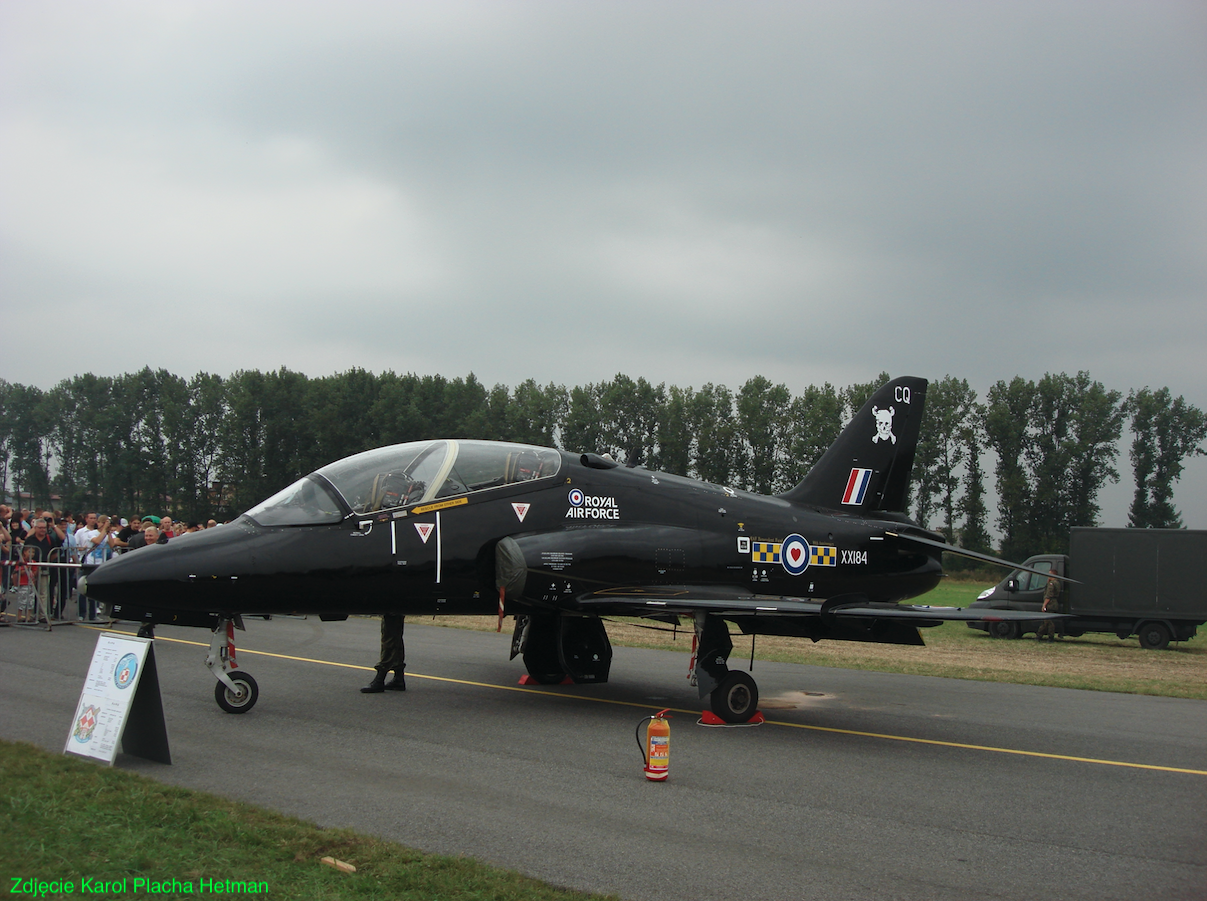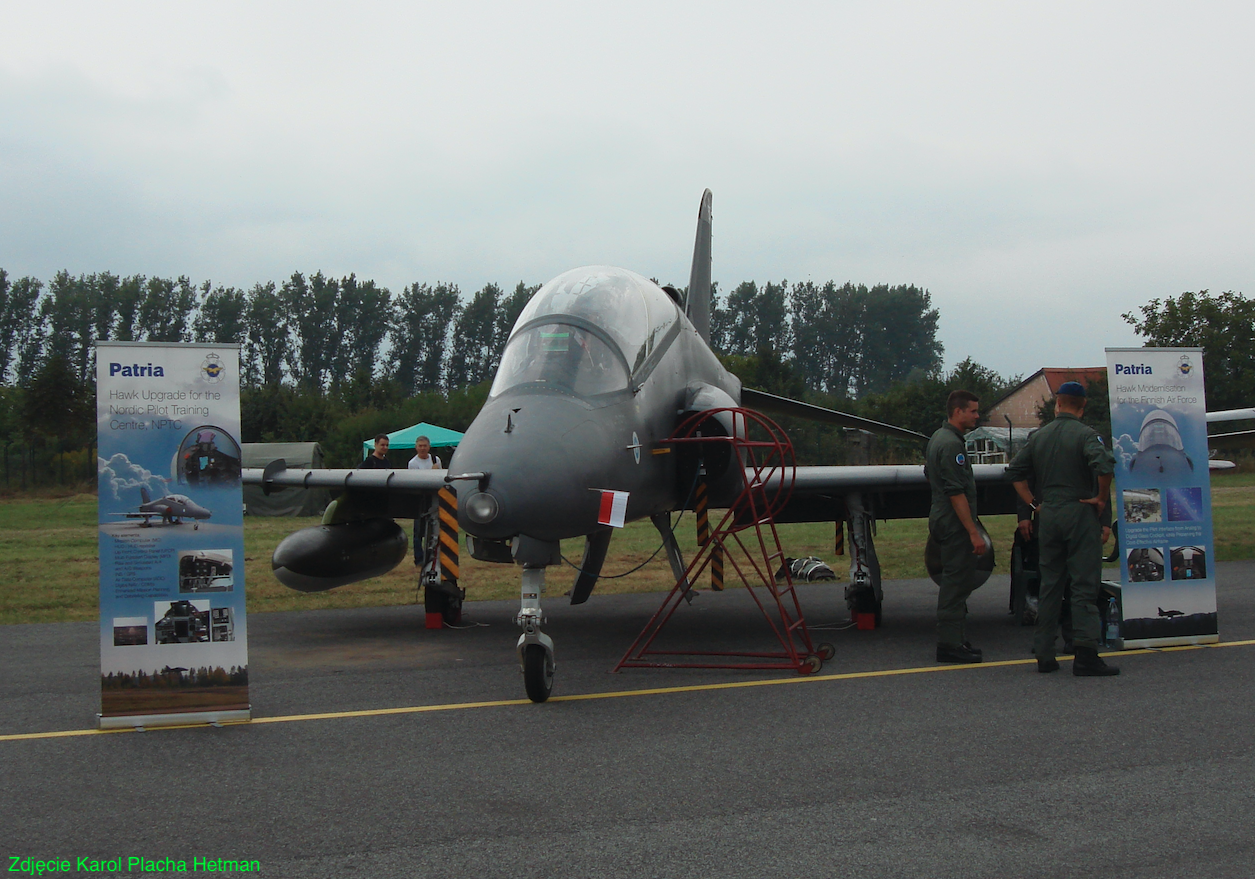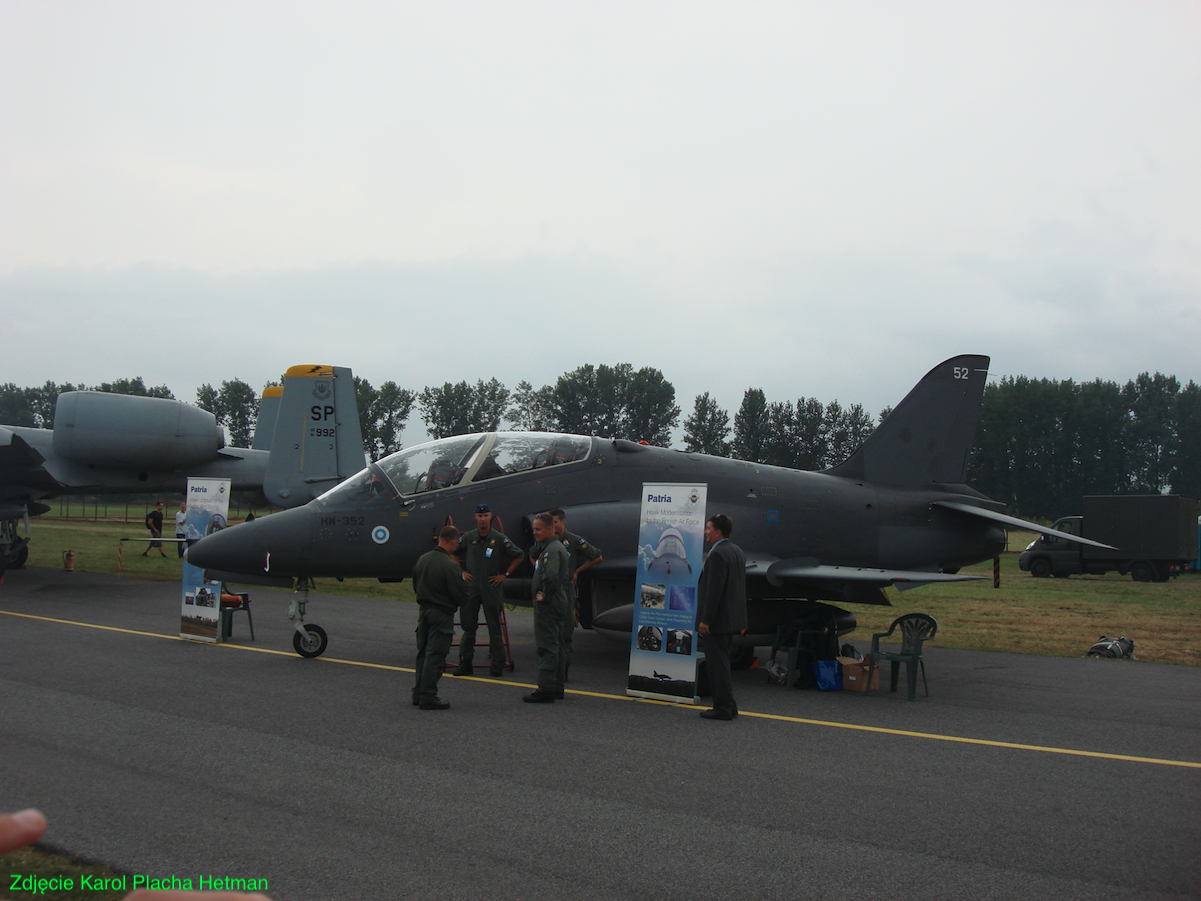Warszawa 2023-04-12
BAE Systems Hawk training and combat aircraft.
BAE Systems Hawk is a training and combat aircraft developed in the UK in 1974, and used until now (2023). The first flight was made on August 21, 1974. Over 1,000 copies were produced. The aircraft was offered to the Polish Army several times, but never entered service in Poland. The Hawk aircraft was developed by Hawker Siddeley. In 1977, the project was taken over by British Aerospace, and since 1999, the owner of the program is BAE Systems MAI division. The aircraft entered service in 1976. The aircraft is operated in 18 countries, including by: RAF, Finland, India, Indonesia, Oman, Malaysia.
Hawk design history.
In 1964, the Royal Air Force developed requirements (Air Staff Target, AST, 362) for a new training aircraft to replace the Folland Gnat. The SEPECAT Jaguar, which was being developed at the time, was originally intended for this role, but it was realized that it would be too complex an aircraft to train. Therefore, in 1968, Hawker Siddeley Aviation (HSA) began research into a simpler aircraft, initially as the Special Project (SP) 117. The design team was led by engineer Ralph Hooper. This project was financed by the company as a private venture, pending possible interest from the RAF. In early 1970, the RAF issued the Air Staff Target (AST) 397 which formalized the need for a new trainer aircraft.
The contract for 175 aircraft was signed in March 1972. The first prototype, marked XX154, made its first flight on August 21, 1974, at Dunsfold Air Base. The pilot was Duncan Simpson. The Hawk T1 version entered service with the RAF in 1976. The first export Hawk 50 flew on May 17, 1976. It was a plane that had the ability to perform assault tasks. After that, many variants of the Hawk aircraft were developed; with night vision, with GPS navigation, with radar, with various weapons, with various communication and identification systems, with a glass cockpit. Everything depends on the wishes of the customer.
In 1981, a derived version of the Hawk was selected by the United States Navy (US NAVY) as a new training aircraft, designated the McDonnell Douglas T-45 Goshawk. The design was adapted for naval service and strengthened to operate directly from the decks of aircraft carriers. This T-45 aircraft entered service in 1994.
The Hawk 200 is a single-seat version of the Hawk training and combat aircraft. The aircraft was developed by British Aerospace and first flew on May 19, 1986. Production lasted in the period 1990 – 2002. 62 copies were built. The aircraft is equipped with a radar, has the ability to carry various armaments, it is possible to refuel in the air. Hawk 200 aircraft were bought by: Indonesia, Malaysia, Oman.
Data T-T Hawk:
Crew of two aviators, except for the Hawk 200 version. Length 12.43 m (40 ft 9 in). Wingspan 9.94 m (32 ft 7 in). Height 3.98 m (13 ft 1 in). Wing area 16.70 m2 (179.64 ft2). Curb weight 4,480 kg (9,880 lb). 3,000 kg (6,600 lb) payload. Maximum weight 9,100 kg (20,000 lb). Engine one Rolls-Royce Turbomeca Adour Mk. 951 turbofan with FADEC, 29.00 kN (6,500 lbf). Top speed Mach 0.84 (1,028 km/h, 639 mph, 555 kN). Range 2,520 km (1,360 nautical miles, 1,565 mi). Ceiling 13,565 m (44,500 ft). Rate of climb: 47 m/s (9,300 ft/min).
Armament: 1 × 30 mm ADEN cannon in a central pod. Armament weight up to 6,800 pounds (3,085 kg) placed on 5 catches. The training version has 3 hooks and an armament weight of up to 1,500 pounds (680 kg).
Written by Karol Placha Hetman




